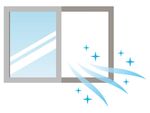Keeping the Campus Healthy - MIT ...
←
→
Page content transcription
If your browser does not render page correctly, please read the page content below
Keeping the Campus Healthy
Vaccination, testing, face coverings, HVAC, density, and public transit
30 Aug 2021 | 8am call
Joe Higgins, Vice President for Campus Services and Stewardship
Peko Hosoi, Associate Dean and Professor of Mechanical Engineering
Cecilia Stuopis, MIT Medical Director
Ian A. Waitz, Vice Chancellor for Undergraduate and Graduate Education
Please ask questions about anything related to campus access in the Zoom chat; a team is ready to respond during
and after the presentation. The slides will be distributed after the call.Evaluation C
Build
Campus-wide review of ventilation systems
M:\projects\2021\21-012\Maps
[
Evaluated:
500
Feet • All central building systems have been assessed
Sources: for ventilation in academic, research, office, and
Basemap: 450+ central
Facility Information Systemsair
(2021)handling systems residential buildings on campus
600+ instructional spaces • Tune-ups and adjustments identified and
completed for start of fall semester
745+ common restroom exhaust systems
• Systems are operating as designed to maintain
indoor air quality as prescribed by ASHRAE
Blue dots indicate assessments for central building systems. Note that these systems serve large areas beyond the dot location.System checks and interventions
• Increased minimum air flow values and outside air ventilation
• Reset automation systems to run in occupied mode 24/7
• Assessed building ventilation systems, proceeded with
repairs or adjustments when necessary
• Ensured restroom exhaust fans are functioning properly
• Performed MERV-13 filtration upgrades where
possible/beneficial
• Inspected elevator ventilation, reprogrammed doors to stay
open when standing (if feasible)Is my ventilation system working? Visit the FAQ We often receive questions related to the way the air in the room feels. • Ventilation is operating as designed even if the system cycles on and off and/or air movement can’t be felt • Temperature and humidity can impact comfort level (not just ventilation) and can be addressed separately Visit the air quality & ventilation FAQ http://web.mit.edu/facilities/about/covid-faq.html#2 Questions? Use the link on the FAQ page. The Customer Service Center will triage queries to MIT’s ventilation team.
Primary protections against COVID MIT has policies and practices in place based on science to protect against infection, including: • Vaccination requirement: expect 98% vaccination rate within the community this fall • Testing, contact tracing, and isolation protocols • Face coverings required indoors to prevent person-to-person airborne spread Public health experts point out that the primary protections against infection comes from these measures. Note: No COVID air safety testing standard has been established.
Safe practices on MIT Shuttles
• Face coverings are required on shuttles.
• High-touch surfaces and vehicles are cleaned frequently.
• Drivers are tested, screened, and provided with PPE.
• An MIT ID is required to ride an MIT shuttle –
98% of our passengers are vaccinated.
• Find real-time updates for both MIT and
EZ Ride shuttles on the MIT Mobile app.
http://web.mit.edu/shuttlesSafe practices for your commute: MBTA
MBTA Ride Safer program https://www.mbta.com/ridesafer
• Face coverings are required on platforms, in stations, on vehicles.
• High-touch surfaces, stations, and vehicles are cleaned frequently
• Hand sanitizers are available
• Staff and drivers are tested, screened, and provided with PPE.
• Service levels have been increased across all modes to accommodate
new patterns of commuting throughout the day and to allow for social
distancing.
Support and tools
○ Look for Transit Ambassadors who can answer your
questions and provide support and guidance.
○ View real-time crowding data for select bus routes to help
you as you make travel choices.
Visit mbta.com/crowding or the Transit app.Tips for your commute: what you can do Research suggests that riding public transportation is much safer than you may think. Sophisticated investigations of coronavirus outbreaks in cities around the world have failed to link any COVID-19 clusters to public transit. Practice these good habits during your commute: • Wear a well-fitted face covering. • Practice good hand hygiene – wash or sanitize before and after your trip. • Maintain personal space. • Avoid people who are not following the rules. • Talk to your manager about travelling during off-peak hours if your job requirements would allow that.
You can also read


























































